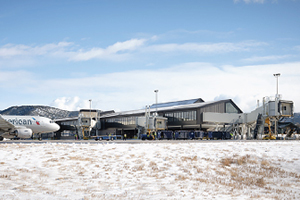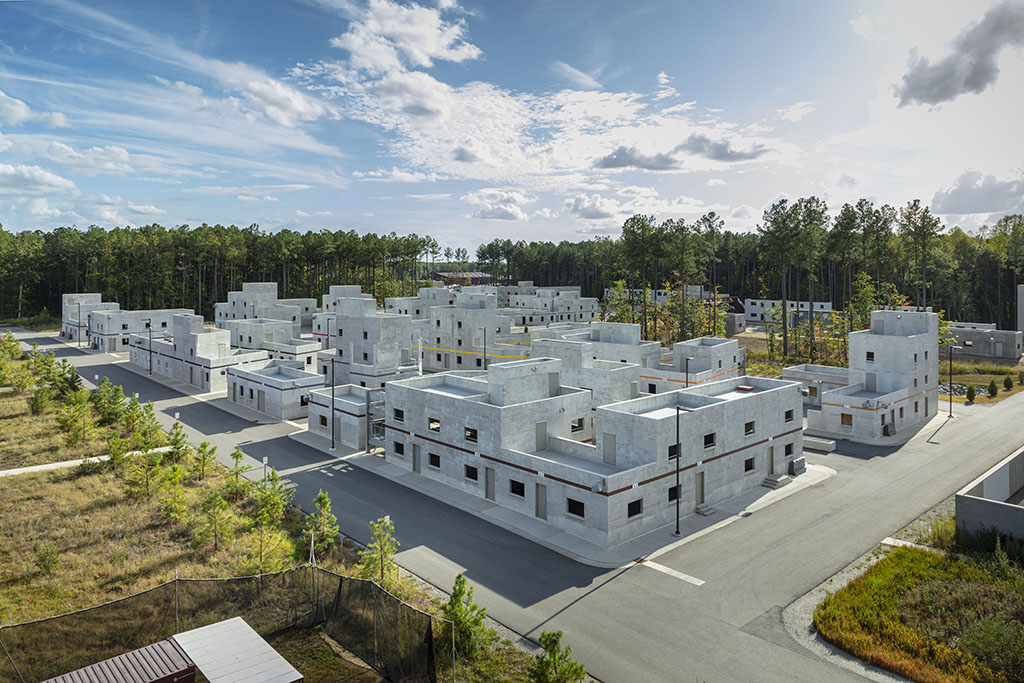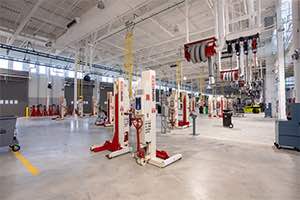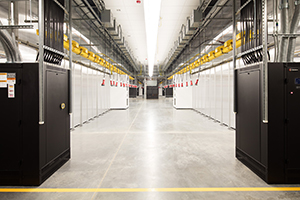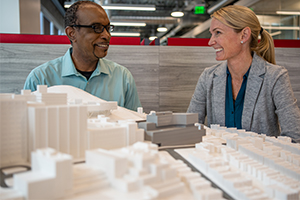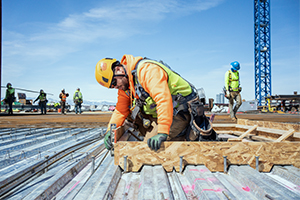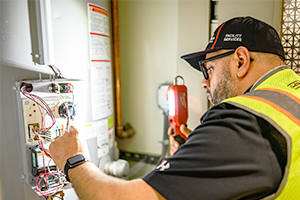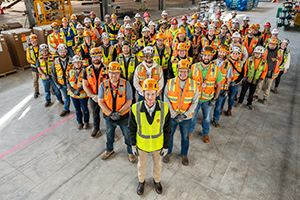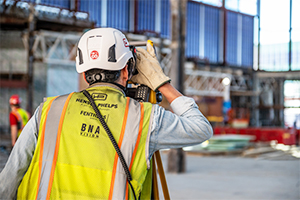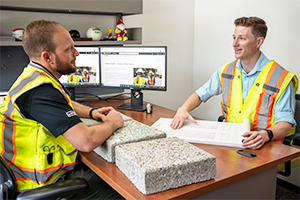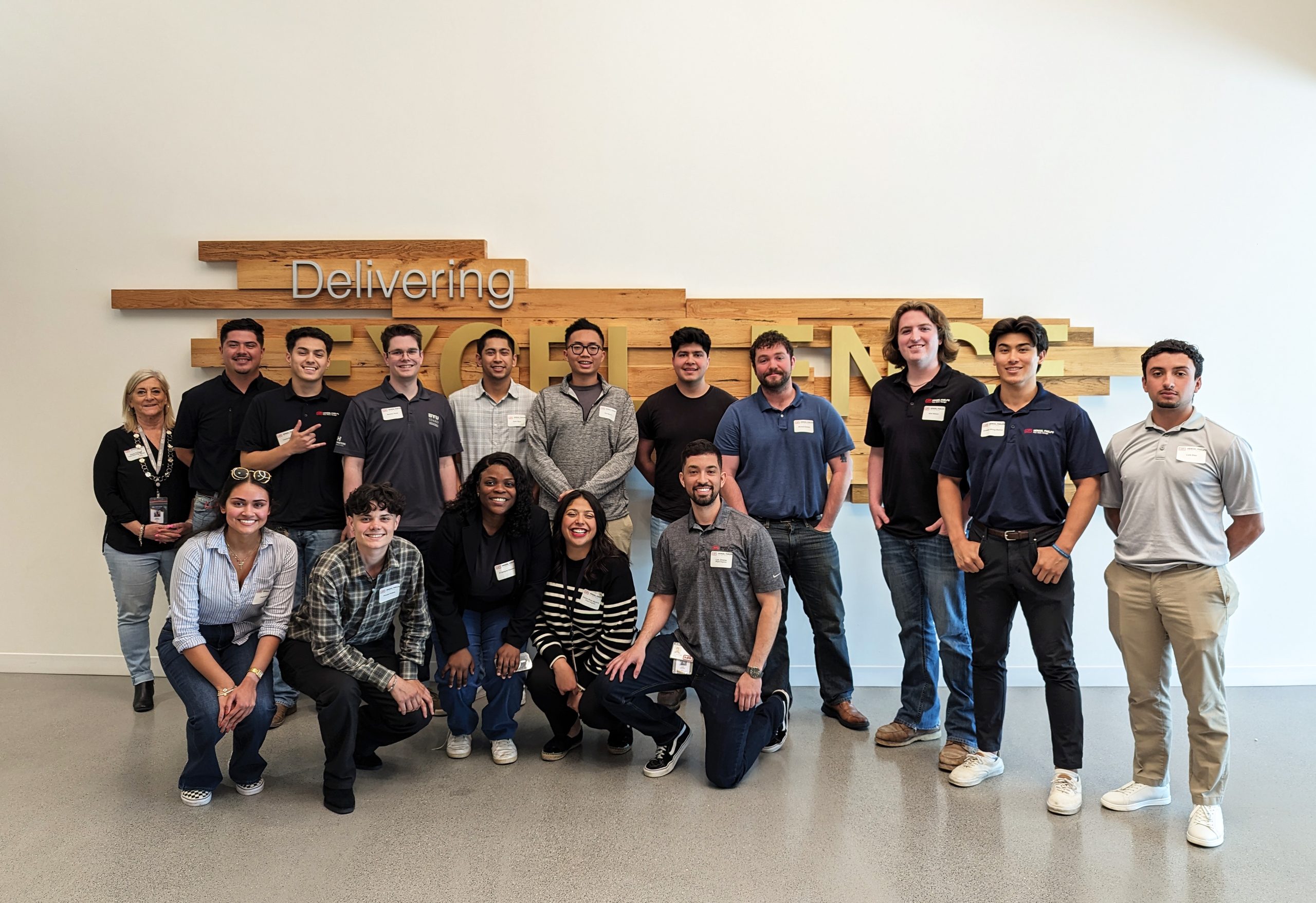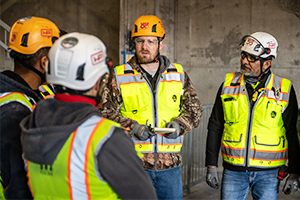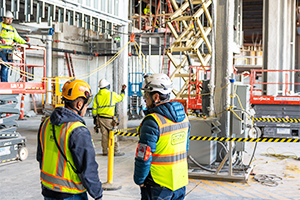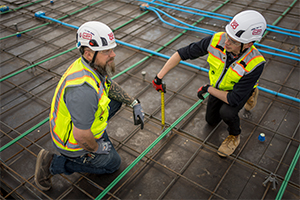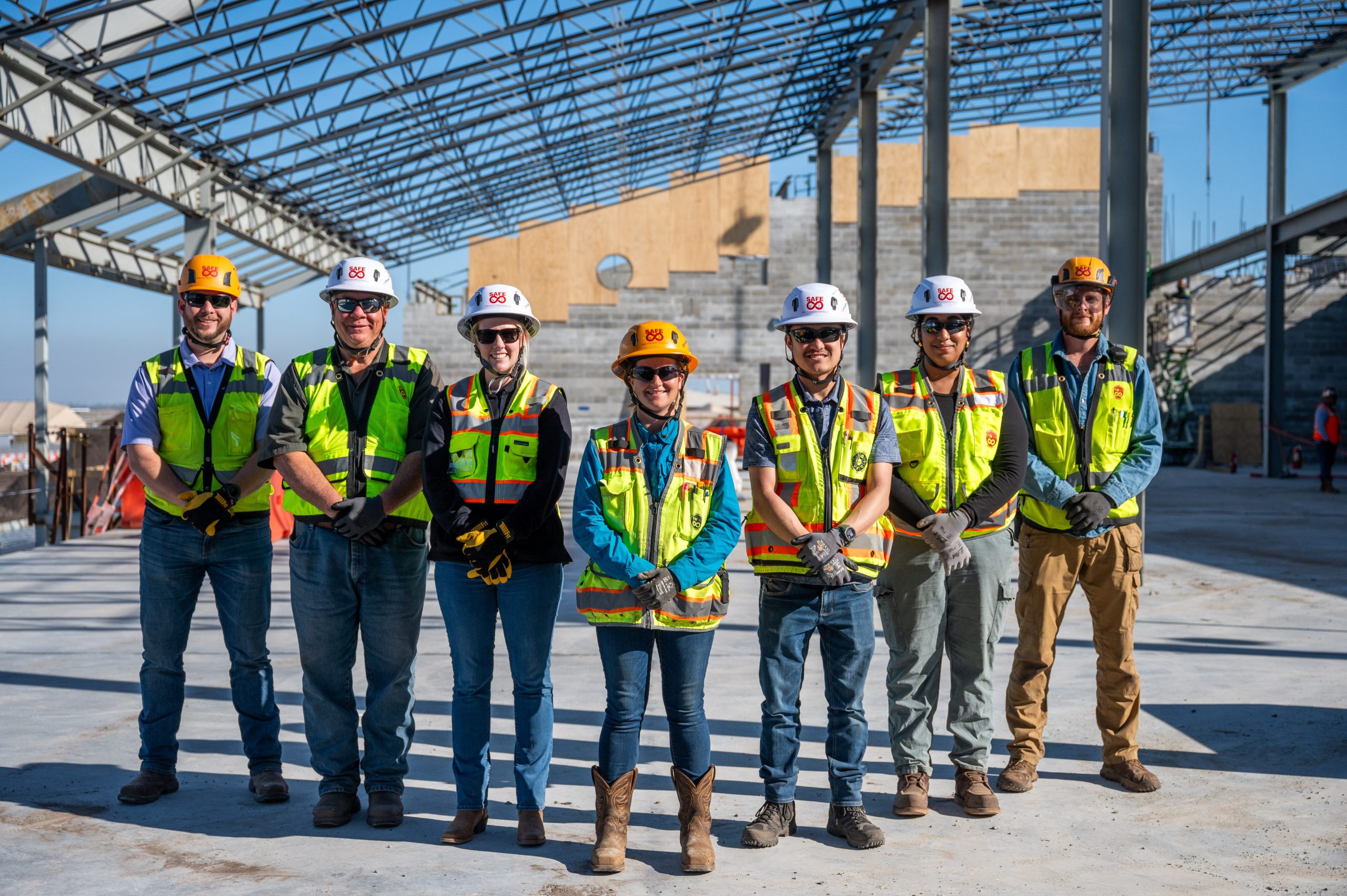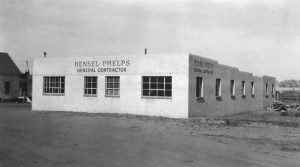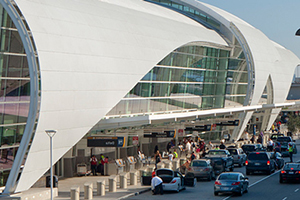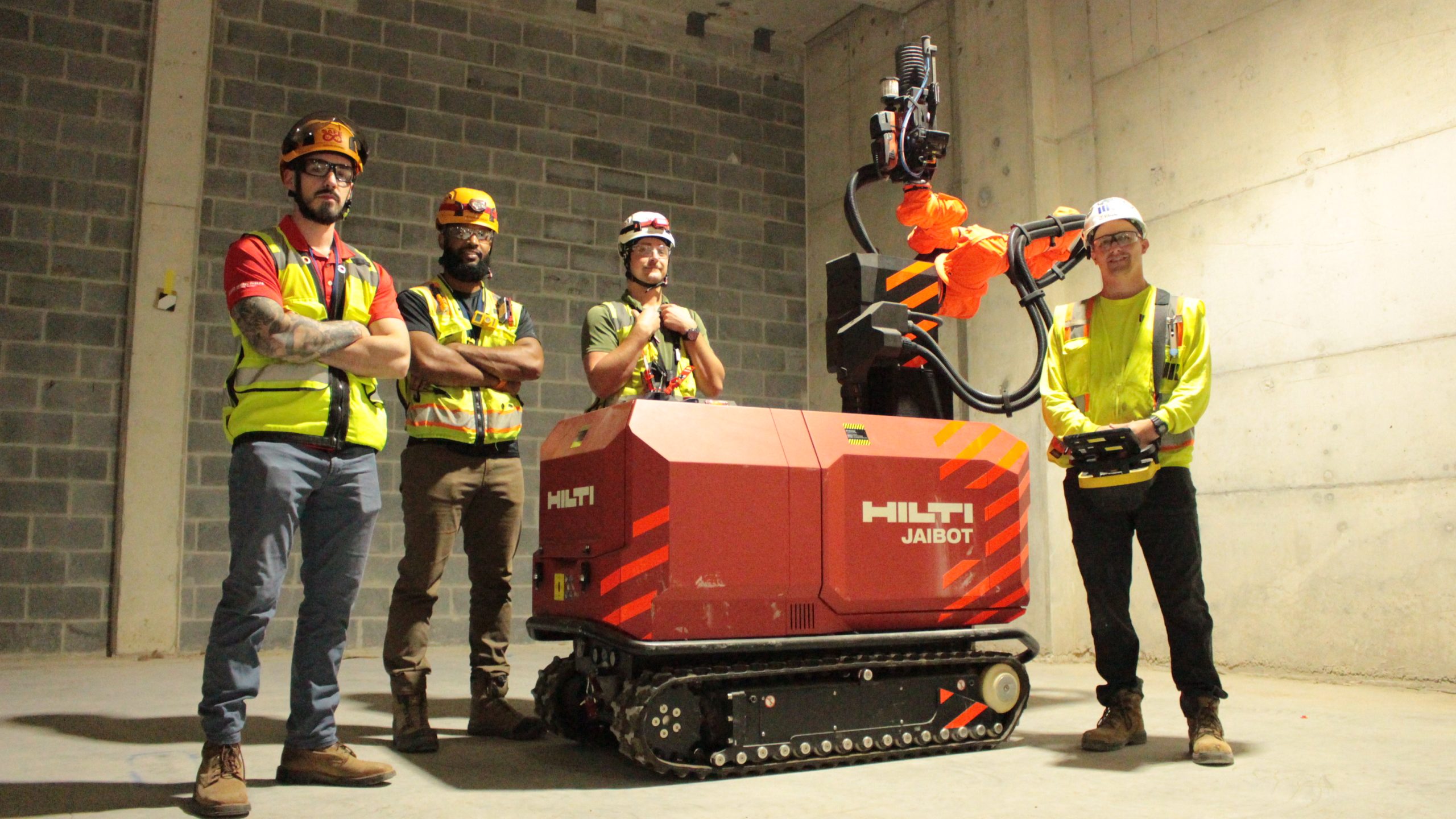
Over the last several months, Diverge has been working with Hilti on several of their cutting-edge tools, including the Jaibot, a robotic overhead drilling tool. Using digital plans, the Jaibot marks and drills holes, eliminating the strenuous task of overhead drilling. The NIH VRC Laboratory Expansion Building 40A project team engaged Hilti to utilize this technology on their project to drill approximately 3,000 holes for MEP anchors. This was the first Hensel Phelps project to use this new technology.
Design Delays Requiring Post-Installed Anchors
Design challenges required the coordination of the basement mechanical room for the Building 40A project to be finalized after the installation of the first-floor concrete slab. As a result, over 3,000 hangers for mechanical and plumbing pipes, ductwork, electrical systems and other trades needed to be post-installed into the overhead concrete deck.
Post-installation requires overhead drilling, which is physically demanding and poses significant safety risks, including musculoskeletal and eye injuries. Traditional methods for this work are also time-consuming, requiring significantly more work hours than the originally planned concrete inserts.
Piloting the Hilti Jaibot
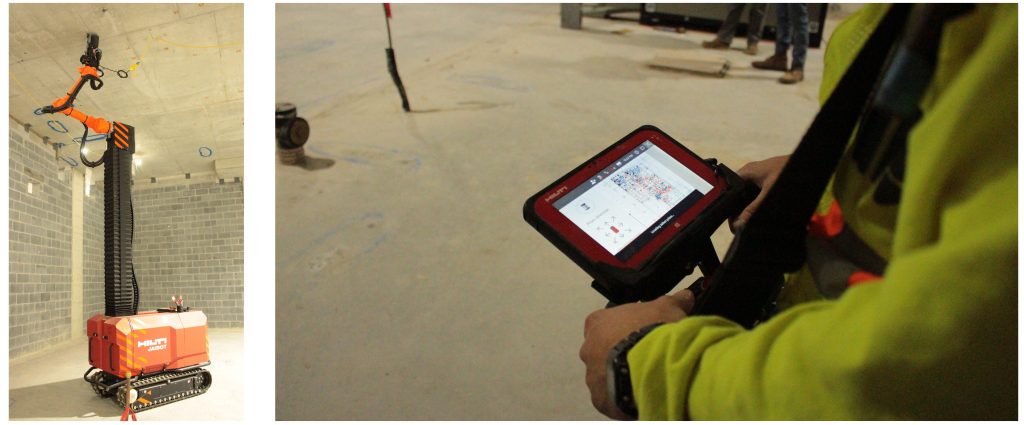
The project team collaborated with Diverge’s internal resources, MEP trade partners and Hilti to designate Building 40A as a pilot project for the deployment of Jaibot. Jaibot is fully integrated with a total station for precise hole placement and uses an onboard vacuum to prevent silica exposure to workers during drilling.
Additionally, Jaibot marks each hole with a dot pattern, allowing trades to easily identify their designated holes without using lifts or ladders to transfer layouts from the floor.
Jaibot is being contracted and operated by Welch & Rushe on our Building 40A project. Hensel Phelps’ Virtual Design and Construction (VDC) team pulls data from coordinated BIM models and provides it to Welch & Rushe to determine drilling locations.
Benefits of the Jaibot
By significantly reducing the amount of manual overhead drilling, Jaibot prevents musculoskeletal and eye injuries. Since the Jaibot sucks up dust as it is drilling, safety hazards relating to dust and fallout are eliminated. Additionally, Jaibot operates much faster than a crew performing layout and drilling manually, enhancing the project schedule and safety.



